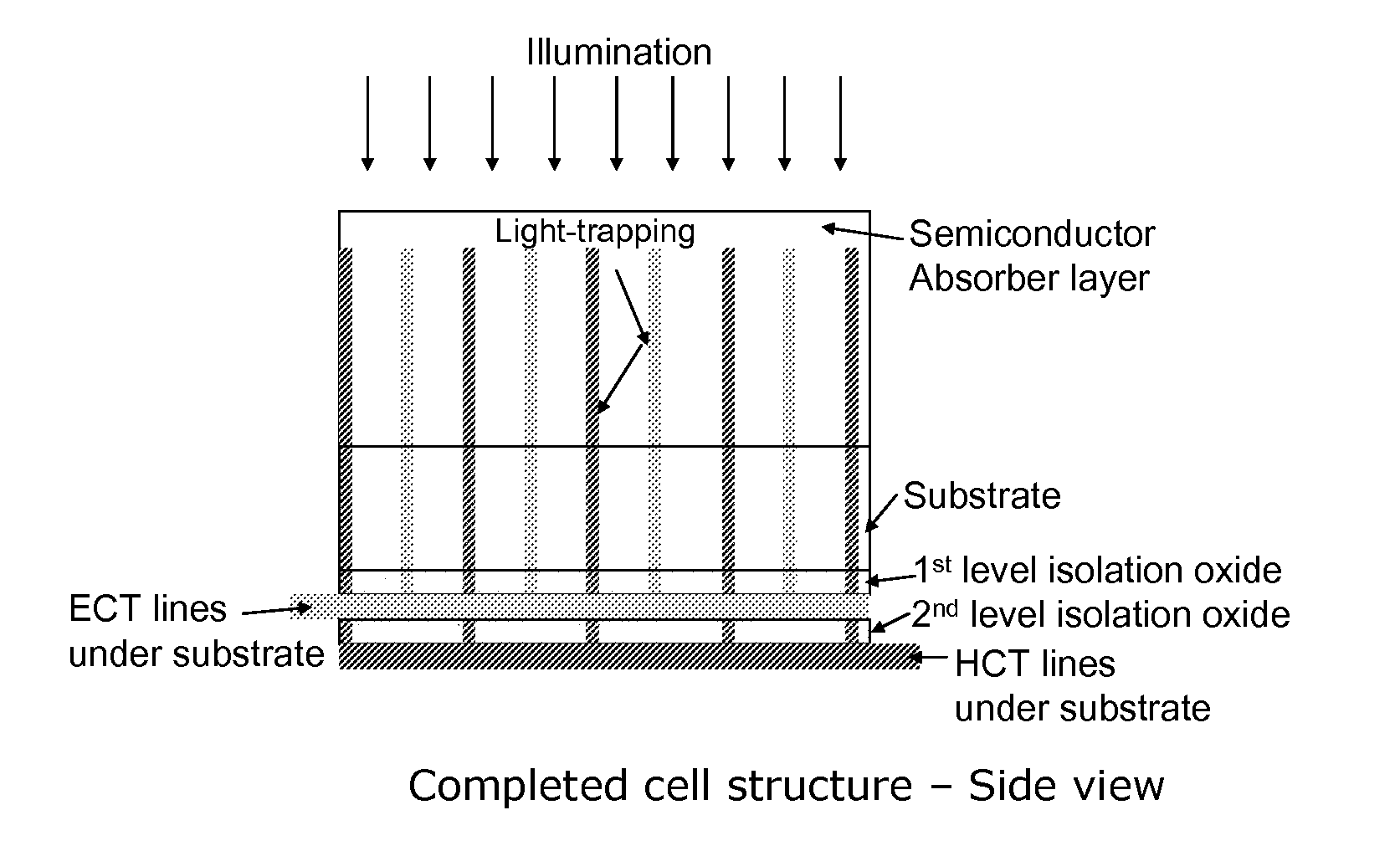High efficiency solar cells and manufacturing methods
a solar cell, high-efficiency technology, applied in the field of solar cells, can solve the problems of low conversion efficiency, high manufacturing cost, and low cost/watt of commercial photovoltaics, and achieve the effects of increasing the thickness of the absorber layer, and reducing the cost of manufacturing
- Summary
- Abstract
- Description
- Claims
- Application Information
AI Technical Summary
Benefits of technology
Problems solved by technology
Method used
Image
Examples
Embodiment Construction
[0029]The following description is not to be taken in a limiting sense, but is made for the purpose of describing the general principles of the disclosure. The scope of the disclosure should be determined with reference to the claims.
[0030]The problem described above is addressed through an innovative cell design which improves efficiency by 2 means: 1) enhanced light-trapping and 2) enhanced carrier collection. The basic cell design takes advantage of the simplicity of a Schottky junction as opposed to a more complex p-i-n diode.
[0031]The preferred embodiment of the cell structure of this disclosure is shown in FIGS. 1a, 1b. It consists of a flexible substrate on which are fabricated contact pins in a pattern which alternates electron collection terminals (ECT) with hole collection terminals (HCT) such that each ECT is symmetrically surrounded by a number of HCTs and vice-versa, as shown in FIG. 2. The ECTs and HCTs are electrically isolated from each other at the substrate, while ...
PUM
 Login to View More
Login to View More Abstract
Description
Claims
Application Information
 Login to View More
Login to View More - R&D
- Intellectual Property
- Life Sciences
- Materials
- Tech Scout
- Unparalleled Data Quality
- Higher Quality Content
- 60% Fewer Hallucinations
Browse by: Latest US Patents, China's latest patents, Technical Efficacy Thesaurus, Application Domain, Technology Topic, Popular Technical Reports.
© 2025 PatSnap. All rights reserved.Legal|Privacy policy|Modern Slavery Act Transparency Statement|Sitemap|About US| Contact US: help@patsnap.com



